The rapid rise of surveillance technologies during the Cold War, stimulated by national security concerns, did not lead to a hope for superior social order. Instead, it helped bring about a monitoring status where Orwellian telescopes in every room could soon become a new reality.
The origin of the first monitoring systems
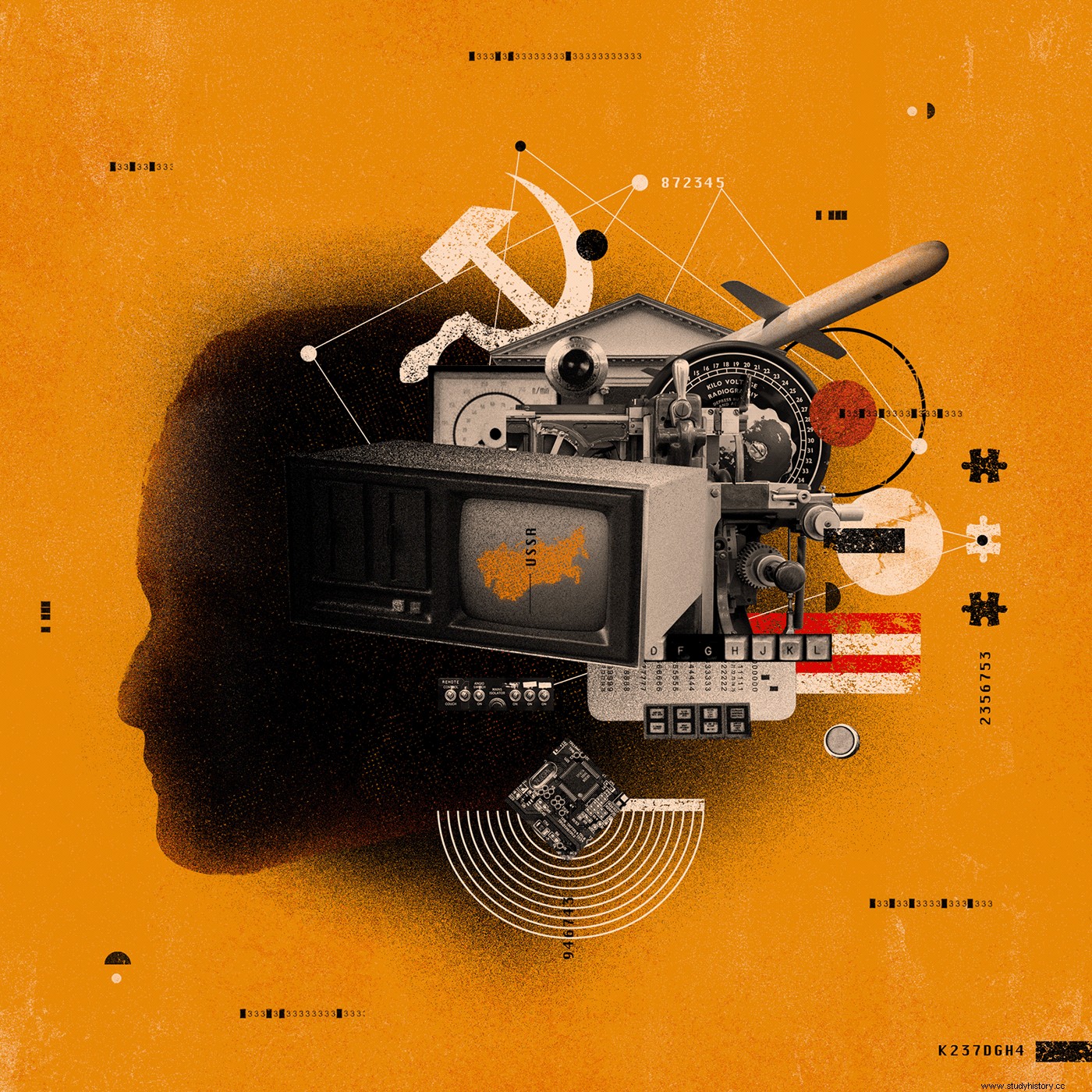
Since the 1940s, the scope of surveillance, increasingly aided by sensors, software applications, and computers, has shifted drastically from individual focus "to an undifferentiated persistent stare across the entire population across large dimensions of space and time." [1]
The generalized fear of security and safety was intensified on August 29, 1949, when the Soviet Union detonated its first atomic bomb. In the circumstances where the enemy's goal was world domination "in any way and at any cost" [2], the United States had to 'survive' by developing effective espionage and counter-espionage services.
In fact, the emergence of the Soviet nuclear threat stimulated scientists to distinguish between meaningless signals and those that could have been potentially threatening, since it is only possible to gain valuable knowledge when data is collected and algorithmically turned into information. [3]
It was therefore important to develop a system that could quickly detect, sort and track possible threatening signals if one were to anticipate the Cold War and become "hot".
Thus, the Cold War became a techno-scientific conflict where operational research was used to change strategic and tactical military balance.
This revolutionary transformation of attitudes toward research generation and understanding of its significance for national security can be understood when US and national budgets in 1930 and 1947 are allocated to research and development in military settings - an increase of more than 27 times. [4]
SAGE Network

This influx of funds enabled the Strategic Air Command to launch the first defense system in 1958 that prefigured the large

complex of real-time connection between computers, known as Semi-Automated Basic Environment (SAGE) Network . This invention was truly revolutionary, since in 1950 only a few radars had only a very limited
detection area, no computing technology capable of processing large amounts of real-time data, and it was not possible to transfer data from one computing device to another. [5] Thus, signal currents were largely not exposed.
But in 1950, George Valley - Physicist at the Massachusetts Institute of Technology (MIT) which established in 1949 an Air Defense Systems Engineering Committee (ADSEC) aimed at investigating the automated air defense problem - met the naval support highly classified project at Servomechanism Laboratory which created "a real-time computer-controlled flight simulator." [6]
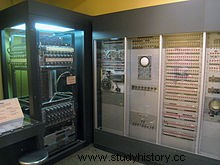
This simulator, known as Whirlwind , was unique, since it was digital, solved real-time calculations, used stored applications and "synchronized all internal operations with a clock." [7]
Valley thus saw the prospect of the Air Force implementing Whirlwind in air defense. [8]
However, there were three main obstacles .
- 1) Since Whirlwind was designed with vacuum tubes, it could not have quickly processed large amounts of data from radars, and it could not have coordinated the data with other data sets on civilian flights [9]
- Thus, engineers had to quickly invent internal memory by combining the electromagnetic properties of ferrite rings , the phenomenon of hysteresis , and the logic matrix design that corresponded to binary data values (on / off) to allow such processing. [10] This enabled the first memory installation in 1953 .
- 2) Another obstacle was Whirlwind inability to quickly synchronize data for all events to be evaluated equally early and normalized for errors. [11]
- This required the use of software-only algorithms.
- The first software company - System Development Corporation (SDC) - was established in 1955 and thus became responsible for the invention of SAGE applications , so that 7,000 3,000,000 pages of written English instructions in three years were "reduced to a thousand pages of mathematical formulas and translated into XNUMX XNUMX XNUMX hole cards". [12]
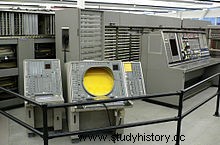
- 3) The last obstacle was the construction of "thirty-two" bomb-hardened "facilities" [13], each containing two 250-tonne massive computers AN / FSQ-7 which could have processed 75,000 XNUMX instructions per second to "track up to four hundred enemy aircraft and automatically direct the interception of fighters or BOMARC missiles." [14]
Eventually, when these obstacles were overcome, it eventually led to the first SAGE installation in 1958, followed by the establishment of a further 22 directional centers, which enabled the collection, sorting and identification of data "which started as radio signals at a distant frontier and were transformed into actionable information (knowledge)." [15]
Therefore, SAGE personified the "first evidence of the value of real-time data analysis" [16] and became a model for future large-scale monitoring .
The importance of SAGE for future large-scale monitoring

SAGE justified the assignment "of external sensors and their network connection to real-time computers" [17] and the translation of these sensors' analog signals into digital data, which can be incorporated into third-party sources and simulated into "actionable information." [18]
For example, Operation IGLOO WHITE , conducted from 1968 to 1973 during the Vietnam War, imitated the design of the SAGE system.
It highlighted the benefits of sophisticated surveillance technologies for asymmetric warfare - a war fought at the expense of inferiority with military knowledge and technology - which can change the qualitative and quantitative frontier characteristics "by shortening the perimeter or increasing the vulnerability of the interior." [19]
Instead of radars, however, over 20,000 sensors were vented to detect sound, heat, vibration or uric acid along the key.

parts of the trail. "[20] If these sensors detected anything, they sent a radio alert to observation planes spinning over target areas, as well as to the Infiltration Monitoring Center (ISC) , which was designed at the SAGE air defense center. [21]
The ISC's combat direction team then sorted the data and carried out air strikes on suspected areas around the location of the triggered sensor.
Therefore, IGLOO WHITE was the first case of an 'electronic battlefield'. [22]
Also, most of them are modern mass surveillance systems, aimed at "seeking security from the flow of opportunities" [23] originate from a field of meaningless signals, and which can thus capture and "extract" data from mobile phones, satellites or internet traffic, were modeled by MITs strong> Lincoln Lab - an organization established to build SAGE. [24]
The Negative Implications of Surveillance
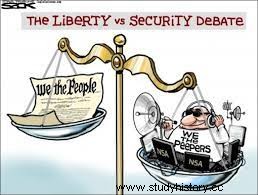
However, the positive implications of surveillance for national security should not be exaggerated.
Historically, the use of the various intelligence agencies, such as the Central Intelligence Agency (CIA) or National Security Agency (NSA) in times of national security concerns, was not intended to create a superior and safer society.
Surveillance was instead used to assist the executive in overriding the legislative branch and in promoting violations of the law under the guise of maintaining national security. [25]
In fact, in the 1970s, under the pretext of national emergency, "the American president had become, in matters of war and peace, the most absolute monarch among the world powers" [26], and many decisions of national importance, based on information obtained by covert means and available only to the executive, were taken in secret, without the approval of Congress. [27]
What's worse, the invocation of a national security mark obscures the distinction between national and foreign affairs, and this allowed the intelligence agencies to use surveillance to direct the very intrusive approach towards virtually everyone . [28]
- The Cold War was marked by the 1947 presidential order authorizing loyalty reviews of government employees "for reasons of national security" [29];
- By 1950-54 witch hunt was amended by the Internal Security Act of 1950 to authorize the imprisonment of anyone suspected of spying. [30]
- In the 1970s, the Senate uncovered CIA-sponsored acts against Chilean President Salvador Allende (1970-1973) The Watergate Affair (1972-1974), as well as a number of other state constitutionally elected regimes overthrowing abroad. [31]


Despite the end of the Cold War, illegal actions by the US government did not stop .
In fact, since the bloodiest terrorist attack on American soil, which took place on September 11, 2001 , frictions arose between the executive and legislative branches due to an unprecedented increase in imperial presidency at the expense of Congress under the guise of protecting national security. [32]
When Congress opened an investigation into the NSA's illegal eavesdropping on electronic messages from individuals in 1999, anti-terrorist measures led to the installation of the terrorist surveillance program two years later. it was to intercept telephone communications and e-mails abroad "Without the prior approval of the Special Court established by the Foreign Intelligence Surveillance Act in 1978." [33]
Edward Snowden's Revelations
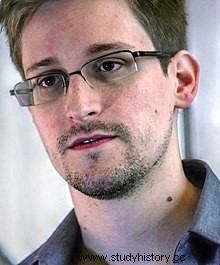
Further revelations given by Edward Snowden of the revealed documents about the NSA community's inner workings have completely revealed the US government's cover of confirmation that "mass surveillance is carried out by government agencies on American individuals." [34]
In 2013, Snowden handed over 58,000 secret NSA files to journalists who revealed the organization's three top secret activities . [35]
- The first is its interception of data during transport through the Upstream programs , Example Fairview , which enables the NSA to obtain the 55,000 XNUMX miles of data-driven optical cables on the Internet located between the United States and other countries, thereby facilitating the surveillance of millions of citizens. [36]
- The other is its access to stored data through the Prism program , which is a data mining program that is tapped directly into the servers of well-known US Internet companies such as Facebook, Skype, YouTube, Apple and Microsoft to collect, identify and store various emails, phone calls, photos, videos and IDs . [37]
- Although the program is aimed at foreigners, it also targets American citizens which speaks to "foreign goals". [38]
- The third is its Installing Spyware on Personal Computers - a practice known as Data Network Utilization (CNE) - obtained through the Quantum Insert program m that, in addition to capturing data during transport, hidden malware also injects users' computers. [39]
- Thus, any device owned by an average American can be infected with spyware that reports malicious software.
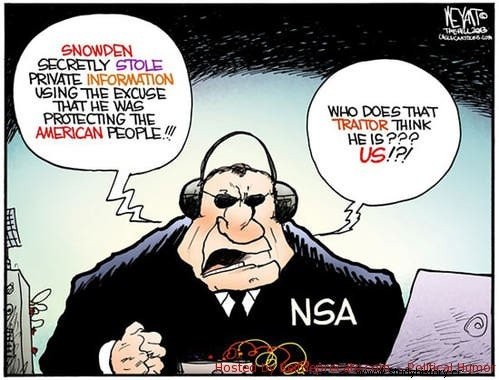
The fact that, in addition to foreigners and suspected criminals, average Americans are also monitored daily, has led to the recognition of innocent people's loss of freedom, as well as government-sponsored interference with the law and human rights.
Blind Faith
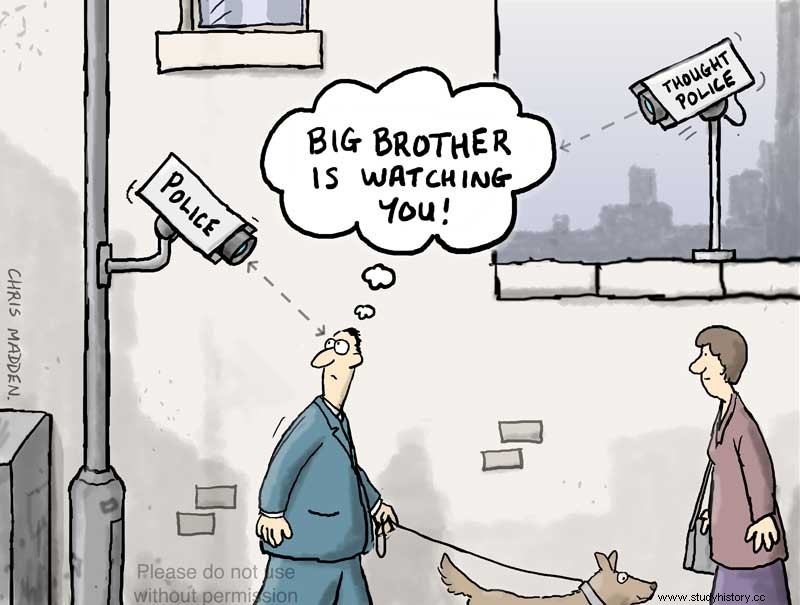
On the other hand, it is the Americans' belief in the presidency, together with their hesitation about the ability of democracy to counter the terrorist threat, that enabled this increase of a Imperial Presidency . [40]
In fact, "what keeps a strong presidency constitutional is the nation's vigilance" [41], since national fears about the likelihood of a new terrorist attack have made average Americans open to increasing levels of state intervention in their civil liberties. [42] Most Americans have become indifferent to having their personal emails and phone messages examined by the NSA; they have also accepted that everything they buy on a credit card (along with their financial information) can be added to the NSA database. [43]
When asked in a 2006 poll whether they would allow the NSA to keep track of every phone call to detect terrorist activities and fight the war on terror, two-thirds of those polled were willing to accept such an invasion of privacy. , despite the fact that it was illegal, to prevent another terrorist attack. ”[44]
It seems that the Orwellian mantra of 'Big Brother is Watching You' will not only become a new reality, but also an increasingly accepted one.
It should be understood, however, that "in this climate of unequivocal acceptance of a pseudo-war on terror" [45] Americans risk agreeing to more and more intrusions into their privacy, while the government finds more innovative ways - always under the guise of citizens' protection - to control the means of public information.
Despite what Americans were indoctrinated to believe, the war on terror is not a conventional war , since it has neither a beginning nor an end, it is not reduced to the designated battlefield, it is not led against a particular state as 'warriors' have a recognized state uniform, and it does not obey the conventions of international humanitarian law.
But without this front of fighting the 'conventional' war on terror, the Network Total Information Awareness (TIA) , which was created to collect detailed personal information about people by integrating transmitted videos with other federal databases, such as the Federal Bureau of Investigation (FBI) biometric database , will be disabled. [46]
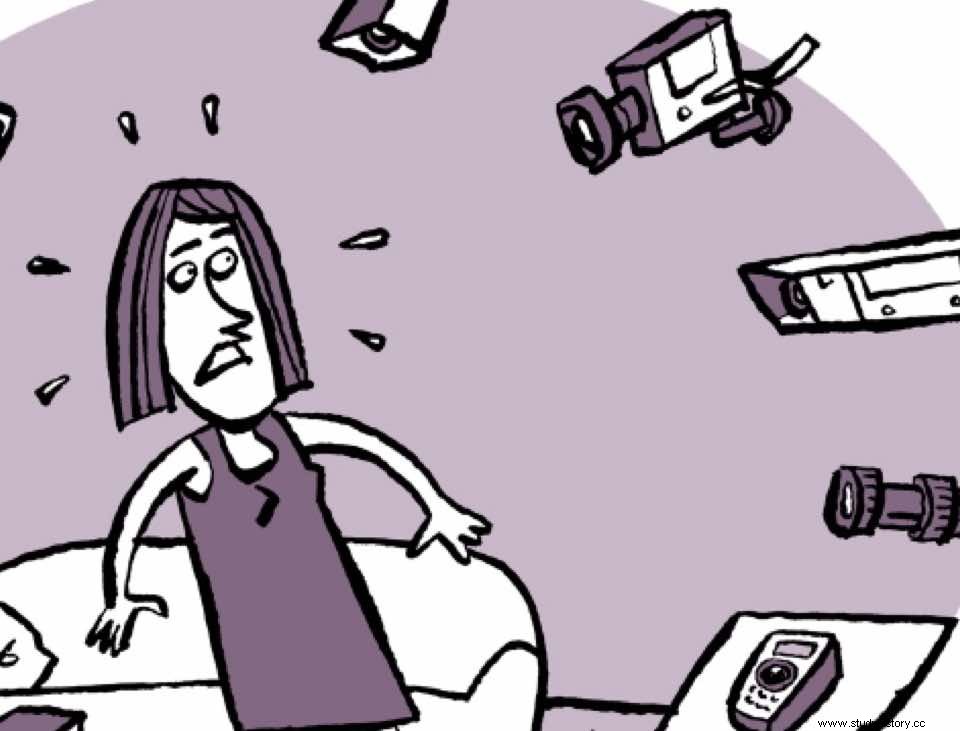
Ironically, but as much as terrorism fails to fulfill the war convention because of its blurred distinctions between civilian and military targets, a program of fair, mass surveillance of American citizens aimed at fighting a war on terror also fails to comply with this Convention.
The United States violates Article 17 of the International Covenant on Civil and Political Rights [47] which guarantees civil rights not to be spied on and thus not used for military purposes.
Although it can be argued that civilians tacitly consent to such surveillance in public, it is also true that surveillance cameras have become pervasive and cannot be avoided. It is the silent nature of surveillance cameras that makes it difficult for society to investigate them. [48]
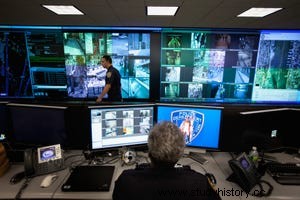
Systems such as “Lower Manhattan Security Initiative” in New York City, which covers an area of 1.7 square kilometers and includes a network of around 3,000 television cameras, as well as chemical, radiological, biological sensors and license plate readers, and "Ring of Steel" , which surrounds London and consists of a network of thousands of surveillance cameras that can identify faces, is becoming increasingly extensive. [49]
Such systems, by capturing average citizens on camera, are able to learn their daily private behavioral activities, despite the fact that everyone has secrets that they do not want to be monitored by state authorities. [50]
In addition to public cameras, the New York Security system also includes private surveillance camera. [51]

In addition to the security systems in New York and London, there is another major player in the shady surveillance industry - network surveillance. For example, the Israeli network monitoring company NSO Group [52] and its Pegasus spyware has been involved in some of the worst digital attacks, since it is secretly installed on a person's phone (usually through a missed call or strange text), enabling an attacker to gain full access to virtually everything on the device, including a phone message, email, camera, media and contacts. [53] The access to camera and microphone also enables reality monitoring.
What's worse, such surveillance also enables physical violations of reality . For example, Pegasus-related digital violence is often accompanied by burglary, arrest, lawsuit and can put emotional stress on hacking victims. [54]
A recent incident involving four former executives of the French surveillance firm Nexa Technologies for its alleged complicity in war crimes and torture in Libya and Egypt is another example of this phenomenon. [55] It has been claimed that between 2007 and 2014, the company provided surveillance technology to the authoritarian regimes of the former Libyan dictator Moammar Gaddafi and Egyptian President Abdel Fattah al-Sisi , which "used the tools to identify dissidents and activists, read private emails and messages, and in some cases kidnap, torture or kill them." [56]
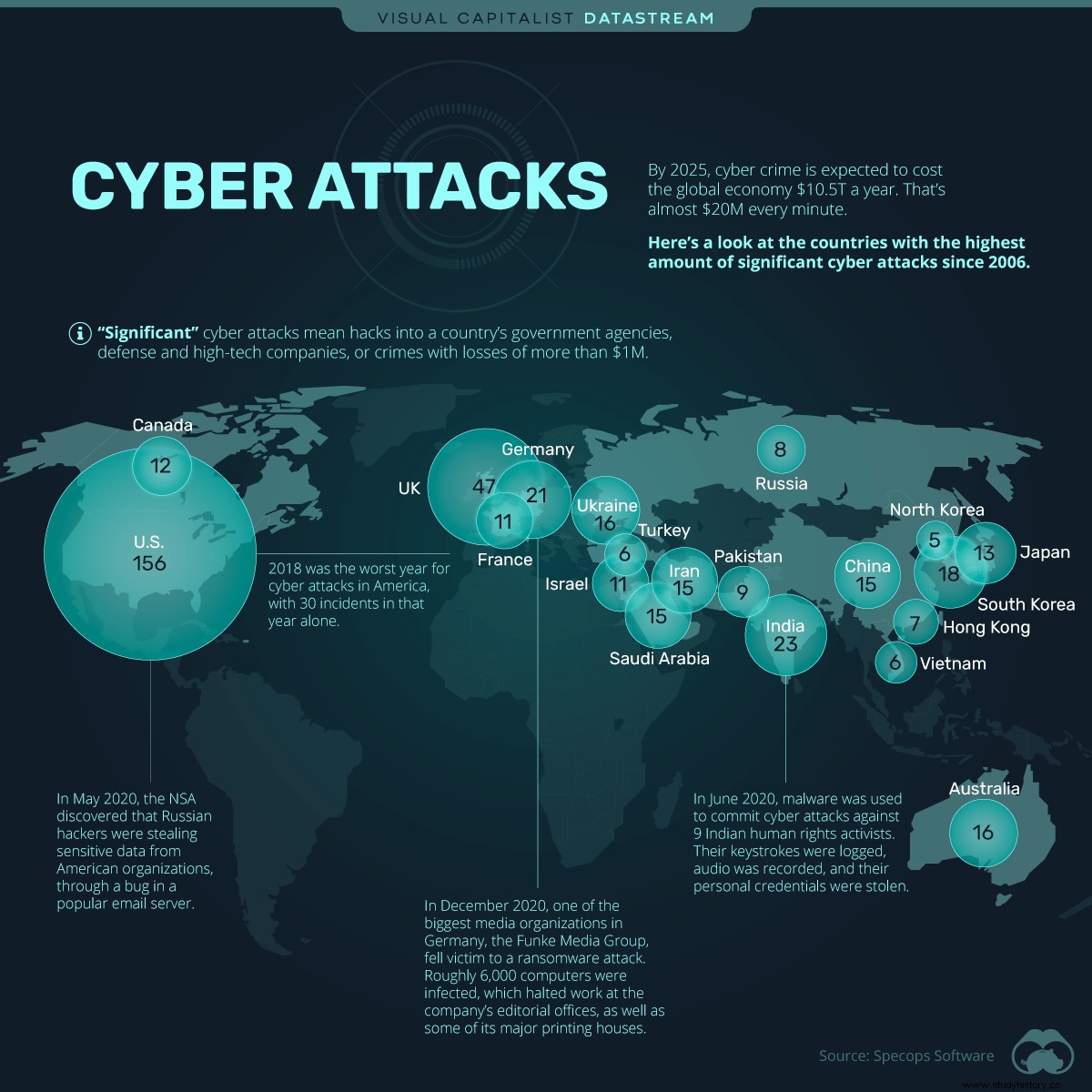
Digital violence also transcends geopolitical boundaries , as surveillance companies such as Pegasus and Nexa Technologies give "users the ability to terrorize almost anyone, anywhere." [57] For example, Pegasus spyware has been used in at least 45 countries worldwide since 2015.
It should be noted that criminal charges against digital violence, as in the case of Nexa Technologies, are extremely rare, as international markets for the export of surveillance technology are highly unregulated, and most surveillance companies frame their tools "as used to combat terrorism." [58 ]
A surveillance state
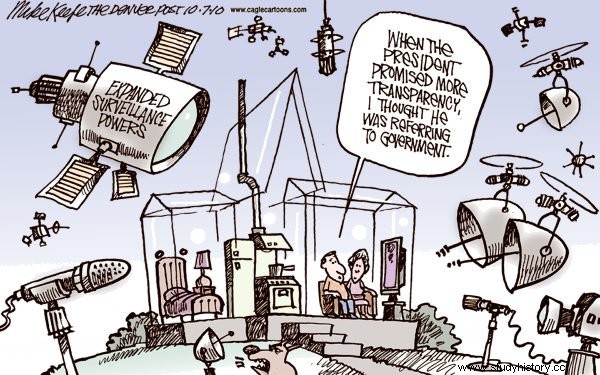
Since surveillance is no longer limited to public areas, the validity of the US Democratic regime is in question, as it is now described as a surveillance status - "A total breakdown of boundaries between the state, the economy and society" [59], in which the liberal ideal of a need for the protected world of individual autonomy has long disappeared.
In fact, the federal government gives the power to spy on law-abiding citizens in the course of their daily activities a serious possibility of abuse .
- For example, recordings of citizens in private areas may be posted on the Internet without their permission .
- Also, those who look behind the cameras are actually people who can get bored and implement their "amazing espionage power" [60] for things that are not related to terrorist tracking .
- This power can become even more pervasive if new military technology, capable of capturing three-dimensional images through walls using sound waves, is attached to mass surveillance systems. [61]
- Furthermore, once the boundaries between public and private areas are broken, there will be no constitutional barriers again to prevent the intrusive progression. [62]
Most importantly, surveillance camera networks do not guarantee the effectiveness of

Prevent future terrorist attacks .
- First, terrorists who are wise enough to carry out a terrorist attack will be aware of the existence and vulnerabilities of surveillance cameras and thus find ways to circumvent them [63]
- For example, the Face Detection System (FRS) will be useless if the suspect has undergone plastic surgery, covered or loosened identifiable [64]
- Second, such cameras can be more efficient at delivering information following an incident of a terrorist attack .
- For example, 500,000 "Steel Ring" cameras proved useful in tracking down four terrorists who set off bombs that killed 50 and wounded 700 on July 7, 2005 in London. [65] Since these terrorists were not on any government watch lists, the FRSs, which are linked to the database containing biometric information on known criminals, could not have been helpful in preventing bombing. [66]
- Third, unless surveillance cameras are pervasive, terrorists can always target a place where such cameras are not installed .
- On the other hand, as mentioned earlier, the establishment of the surveillance state, where everything is monitored by security cameras, is extremely unethical and illegal.
- Fourth, FRSs is prone to error, being accurate only 54 percent of the time . [67]
The dangers posed by the FRS
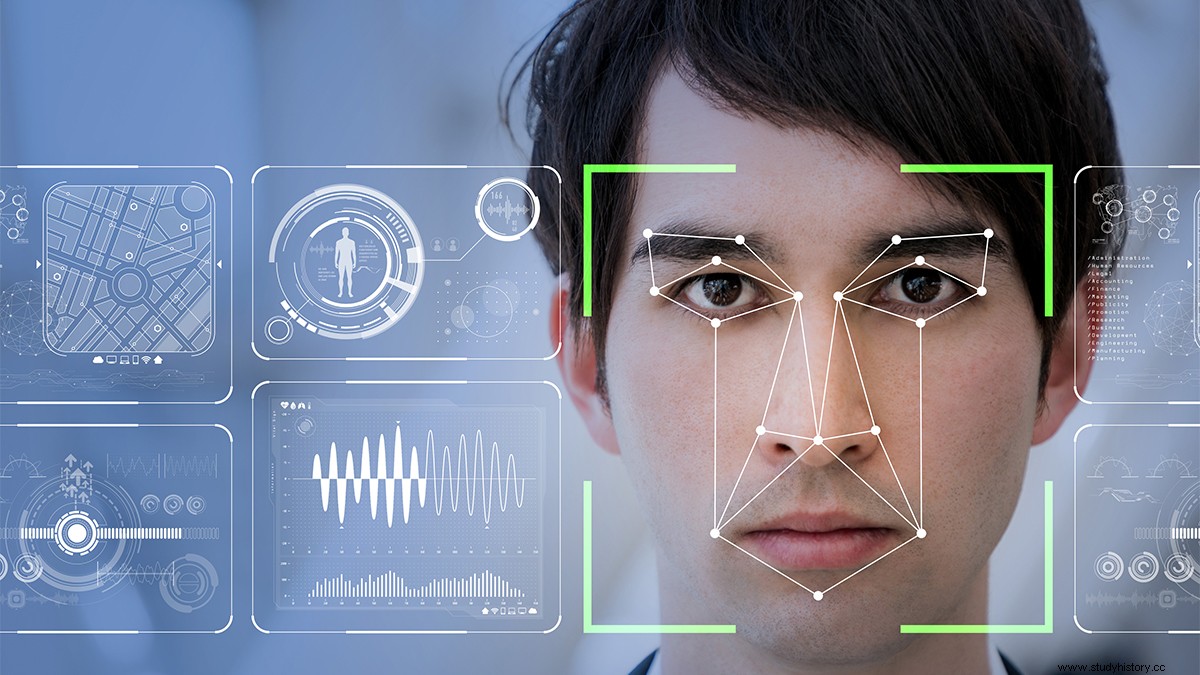
Since many security analysts and forums see the FRS as the ideal surveillance technology to combat the terrorist environment, it opens up the possibility of political consequences . [68]
Due to the fact that FRS is quite accurate (70-85% accuracy rate) in ideal Circumstances Many security analysts trust them too much and even override their own assessments since they believe that "the system under such high operating conditions must 'see something' that they do not." [69]
However, the fact that FRS's performance drastically deteriorates in a "face-to-crowd" environment and in a situation "where there is an elapsed time between the database image and the probe image" [70] is not always accounted for.
Such 'unideal' conditions can lead to two possible outcomes :
- First, operators can get "too" used to false positives and thus treat all alarms in the same way, thus leading to system uselessness.
- Another way to deal with system ineptness is for operators to increase the identification threshold
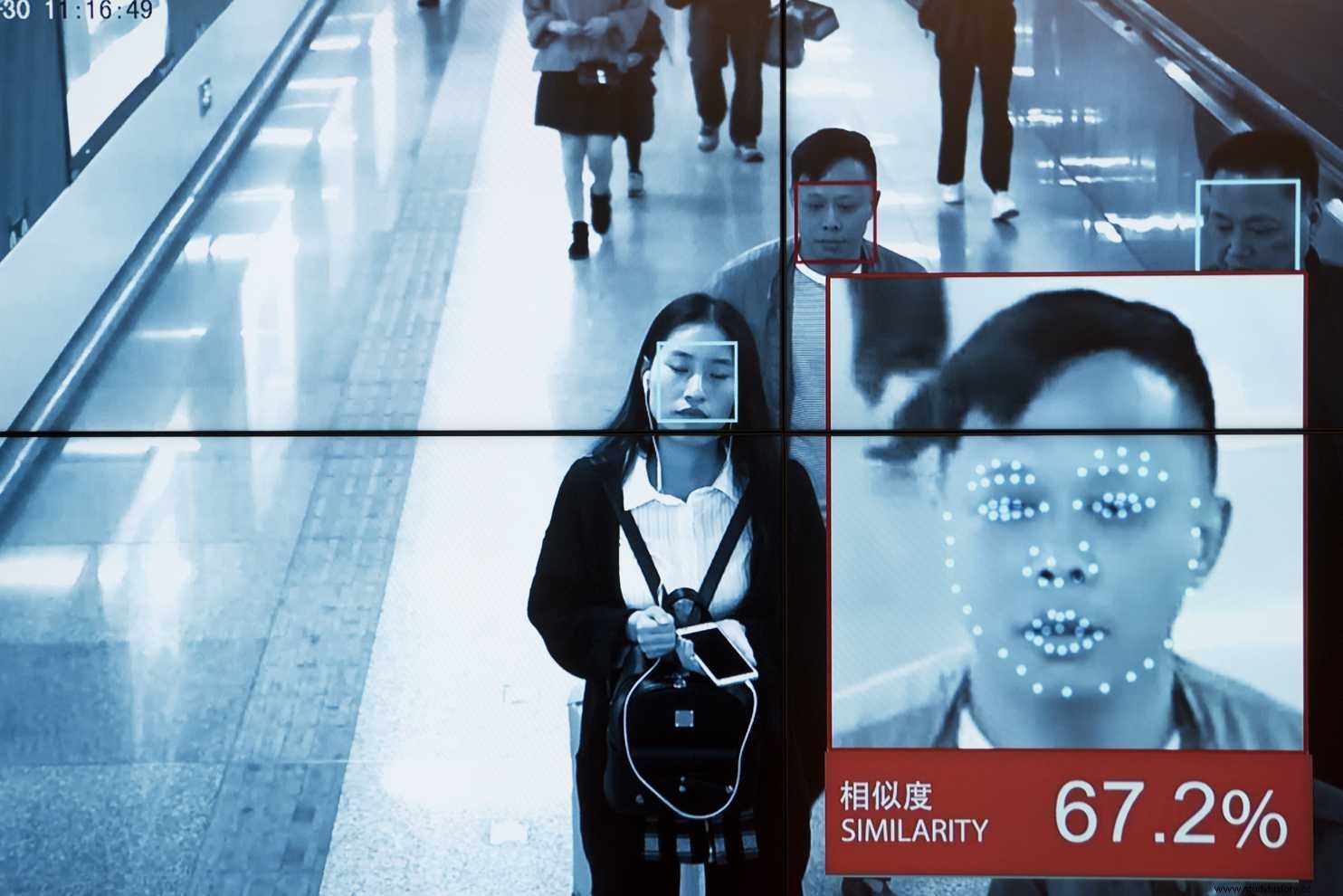
asks the system to reduce false positives. However, this may also increase the number of false negatives, since an "increased threshold for small differences in identifiability" [71] will lead to a greater likelihood of triggering alarms by African Americans, Asians and older people who are more easily identified by the algorithms [72], and thus again make the system unusable.
- Due to the high level of trust in FRS security officials, these innocent biases (which are false positives) will be subjected to disproportionate scrutiny, creating the 'digital divide'. [73]
- In addition to the human tendency to unfair discrimination, it would be naive to assume that security officials would not be inclined to target a person who 'looks suspicious' by simply relying on his / her racial characteristics, especially in periods with "the pursuit of terrorists by officers for a culture of 'war' on terror." [74]
An occurrence at Fresno Yosemite International Airport in 2002 reflects this idea. According to statistics, the FRS installed at the airport generated about one false positive for every 750 passengers, but shortly after installation it was dropped off by "a man who looked like he could [have] [been] from the Middle East." [75]
That man was later arrested by the FBI and released only the next day. [76]
Thus, the system operated at a very limited false positive speed, which led the operators to believe that "an alarm must [have] [meant] something." [77]
Moreover, the fact that a man was allegedly from the Middle East stimulated the FBI to arrest him more thoroughly than necessary, despite the fact that he was obviously a false positive.
Therefore, some minor digital biases can have significant negative political implications, especially for innocent bias groups and especially in times of national emergency.
Safer alternative monitoring technologies
To be sure, there are some alternative surveillance technologies which can provide protection against terrorist attacks without restricting civil liberties.
For example, both the "Ring of Steel" and New York surveillance systems include sensing technologies which can detect possible terrorist attacks without leading to privacy restrictions to the extent related to surveillance camera networks. [78]
In fact, such sensors can also be attached to surveillance cameras that can turn on only when sensors are triggered by a specific chemical or biological agent and only within the vicinity of the substance in question. [79]
However, the federal officials did not when designing New York and London surveillance camera networks any efforts to balance citizens' right to privacy against the security that these surveillance networks may offer. [80]
Possible ways to resist
Since "mass surveillance has been turned [even] against those who credibly believe that they really live in a free society" [81],
there is a need for resistance.
There are many different ways to resist the invasion of privacy .

For example, resistance can lead to refusal to use loyalty card stores or to fill out warranty forms, use another person's identity card, "mask", by wearing a low hat or use a make-up name to access a website, or disable the surveillance camera through spray painting. [82]
People can also resist using techniques such as encryption, private servers or even stick a piece of paper in the optical eye of the computer. [83]
Finally, it is up to everyone to decide how to resist "such grotesque exploitation of undoubtedly cruel violence", [84] but it is crucial for everyone to resist this encroachment on fundamental rights to privacy.
the conclusion
The first intention behind the development of surveillance technology was aimed at distinguishing between meaningless and threatening signals in times of national emergency.
However, the executive branch, which aimed to capitalize on its transgressions, later learned to manipulate national security labels for unrestricted access to surveillance technologies now aimed at ordinary citizens, despite the fundamental human right to privacy.
Today, surveillance resources have completely converged in people's daily activities, making the United States the United States surveillance status .
(Opens in a new browser tab) (Opens in a new browser tab) (Opens in a new browser tab)
Bibliography :
- Cohen, Elliot D. "Big Brother Watching (Literally) You:The Manhattan Security Initiative." In Mass Monitoring and State Control:Total Information Awareness Project , 101-36. Palgrave Macmillan, 2010.
- Dafoe, Taylor. "Art Collective Forensic Architecture has teamed up with Edward Snowden to investigate a shady global spy software company." Artnet, July 9, 2021. https://news.artnet.com/art-world/forensic-architectures-new-project-charts-elusive-development-digital-violence-1987403.
- Fussell, Sidney. "Franske spionprogramledere er tiltalt for å hjelpe tortur." Kablet 23. juni 2021. https://www.wired.com/story/french-spyware-executives-indicted-aiding-torture/.
- Harcourt, Bernard E. “Overvåkingsstat? Det er så mye verre. ” Chronicle of Higher Education , Desember 4, 2015. https://go-gale-com.myaccess.library.utoronto.ca/ps/i.do?p=CPI&u=utoronto_main&id=GALE|A437221987&v=2.1&it=r&sid=summon.
- Introna, Lucas D. og David Wood. “Avbildet algoritmisk overvåking:politikken til ansiktsgjenkjenningssystemer.” Overvåkning og samfunn 2, nei 2/3 (juli 2004):177–98. https://search-proquest-com.myaccess.library.utoronto.ca/docview/38014955?accountid=14771&pq-origsite=summon.
- Lyon, David. "Sliter med overvåking." I Overvåkingsstudier:En oversikt 159-78. Polity Press, 2007.
- Lyon, David. "Snowden Storm." I Overvåking etter Snowden 15-42. Polity Press, 2015.
- MacWillie, John. "Fra nøkkelhull til Big Brother:The Legacies of Early Cold War Surveillance." Overvåkning og samfunn 16, nr. 2 (2018):203-18. https://ojs.library.queensu.ca/index.php/surveillance-and-society/article/view/7000/7671.
- Mattelart, Armand. "Den kalde krigen og religionen om nasjonal sikkerhet." I Globaliseringen av overvåking:Opprinnelsen til den sekuritære ordenen , oversatt av Susan Gruenheck Taponier og James A. Cohen, 49–64. Polity Press, 2010.
- "Ny undersøkelse viser global menneskerettighetsskade på NSO-gruppens spionprogramvare." Amnesty International, 3. juli 2021. https://www.amnesty.org/en/latest/news/2021/07/investigation-maps-human-rights-harm-of-nso-group-spyware/.
- Wolfensberger, Donald R. "Return of the Imperial Presidency?" Wilson Quarterly , 2002. https://www-jstor-org.myaccess.library.utoronto.ca/stable/40260602?pq-origsite=summon&seq=1#metadata_info_tab_contents.
Merknader:
[1] John MacWillie, "Fra nøkkelhull til Big Brother:The Legacies of Early Cold War Surveillance," Overvåkning og samfunn 16 (2018):s. 203-218, https://ojs.library.queensu.ca/index.php/surveillance-and-society/article/view/7000, 203.
[2] Armand Mattelart, "The Cold War and the Religion of National Security," i Globaliseringen av overvåking , trans. Susan Taponier og James A. Cohen (Cambridge:Polity Press, 2010), s. 49-64, 50.
[3] MacWillie, Ibid, 212.
[4] Mattelart, Ibid, 54.
[5] MacWillie, Ibid, 213.
[6] Ibid.
[7] Ibid.
[8] Ibid.
[9] MacWillie, Ibid, 214.
[10] Ibid.
[11] Ibid.
[12] Ibid.
[13] Ibid.
[14] Ibid.
[15] Ibid.
[16] MacWillie, Ibid, 215.
[17] Ibid.
[18] Ibid.
[19] MacWillie, Ibid, 212.
[20] MacWillie, Ibid, 216.
[21] Ibid.
[22] Ibid.
[23] Ibid.
[24] Ibid.
[25] Mattelart, Ibid, 56.
[26] Donald R. Wolfensberger, "The Return of the Imperial Presidency?" Wilson Quarterly , 2002, https://www-jstor-org.myaccess.library.utoronto.ca/stable/40260602?pq-origsite=summon&seq=1#metadata_info_tab_contents.
[27] Mattelart, Ibid, 58.
[28] Ibid.
[29] Mattelart, Ibid, 57.
[30] Ibid.
[31] Mattelart, Ibid, 58.
[32] Wolfensberger, Ibid.
[33] Mattelart, Ibid, 59.
[34] David Lyon, "Snowden Storm," i Overvåking etter Snowden (Polity Press, 2015), s. 15-42, 16.
[35] Lyon, "Snowden Storm", Ibid, 17.
[36] Lyon, "Snowden Storm", Ibid, 18.
[37] Lyon, "Snowden Storm", Ibid, 19.
[38] Lyon, "Snowden Storm", Ibid, 20.
[39] Ibid.
[40] Wolfensberger, Ibid.
[41] Ibid.
[42] Elliot D. Cohen, “Big Brother Is (Literally) Watching You:The Manhattan Security Initiative,” i Masseovervåking og statskontroll:Total Information Awareness Project (Palgrave Macmillan, 2010), s. 101-136, 129.
[43] Ibid.
[44] Cohen, Ibid, 101.
[45] Ibid.
[46] Cohen, Ibid, 107.
[47] Artikkel 17 ICCPR, https://www.ohchr.org/en/professionalinterest/pages/ccpr.aspx.
[48] Lucas D. Introna og David Wood, "Picturing Algorithmic Surveillance:The Politics of Facial Recognition Systems," Overvåkning og samfunn 2, nei 2/3 (juli 2004):s. 177-198, https://search-proquest-com.myaccess.library.utoronto.ca/docview/38014955?accountid=14771&pq-origsite=summon, 184.
[49] Cohen, Ibid, 131.
[50] Cohen, Ibid, 132.
[51] Cohen, Ibid, 130.
[52] “Ny etterforskning viser global menneskerettighetsskade på NSO Groups spionprogramvare,”Amnesty International , Juli 3, 2021, https://www.amnesty.org/en/latest/news/2021/07/investigation-maps-human-rights-harm-of-nso-group-spyware/.
[53] Ibid.
[54] Taylor Dafoe, "Art Collective Forensic Architecture har gått sammen med Edward Snowden for å undersøke et skyggefullt globalt spionprogramvareselskap," ArtNet , Juli 9, 2021, https://news.artnet.com/art-world/forensic-architectures-new-project-charts-elusive-development-digital-violence-1987403.
[55] Sidney Fussell, "Franske spionprogramledere blir tiltalt for å hjelpe tortur," Wired , Juni 23, 2021, https://www.wired.com/story/french-spyware-executives-indicted-aiding-torture/.
[56] Ibid.
[57] Dafoe, ibid.
[58] Fussell, Ibid.
[59] Bernard E. Harcourt, “Overvåkingsstat? Det er så mye verre, ” Chronicle of Higher Education 62, nr. 14 (29. november 2015), https://www.chronicle.com/article/A-Mad-Frenzy-of-Disclosure/234338.
[60] Cohen, Ibid, 134.
[61] Ibid.
[62] Cohen, Ibid, 132.
[63] Ibid.
[64] Ibid.
[65] Ibid.
[66] Cohen, Ibid, 133.
[67] Cohen, Ibid, 134.
[68] Introna, Ibid, 191.
[69] Introna, Ibid, 192.
[70] Ibid.
[71] Ibid.
[72] Ibid.
[73] Ibid.
[74] Cohen, Ibid, 134.
[75] Introna, Ibid, 193.
[76] Ibid.
[77] Ibid.
[78] Cohen, Ibid, 134.
[79] Cohen, Ibid, 135.
[80] Ibid.
[81] Lyon, "Snowden Storm", Ibid, 24.
[82] David Lyon, “Struggles over Surveillance,” i Overvåkingsstudier:En oversikt (Polity Press, 2007), s. 159-178, 168.
[83] Harcourt, ibid.
[84] Ibid.
